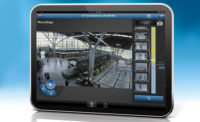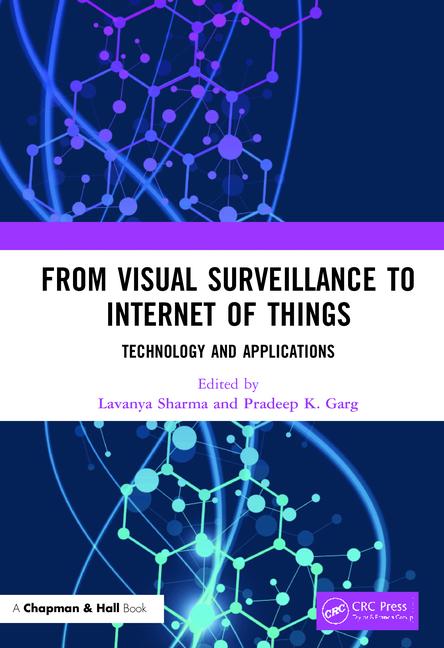How to Get the Most out of Thermal Cameras

While technology continues to evolve, one constant is that outdoor detection remains the best type of application for thermal cameras.
PHOTO COURTESY OF AXIS COMMUNICATIONS

The ability to “see” heat makes thermal cameras the best choice for total or near-total darkness, as well as for fog, smoke, unfavorable weather and other challenging conditions.
PHOTO COURTESY OF AXIS COMMUNICATIONS


Over the past two years or so, the prices of thermal cameras have declined, making the technology more accessible to a broader number of end users. This lower barrier to usage not only makes thermal more practical for more applications, but it also opens the door to more revenue opportunities for installers and integrators. As in many facets of life, the single-biggest key to seizing on these opportunities is knowledge.
The first thing to understand is that while lower costs make them possible for a wider range of customers and deployments, thermal cameras are not always practical. There are a number of things thermal cameras do well, but they’re not for every job. With thermal, every application fits into one of two categories: Temperature measurement and non-temperature measurement (or detection). Without fail, every deployment fits within those two categories, so it’s important to understand which, if either, of these buckets a particular customer or installation belongs in.
With this in mind, there are a number of other factors that, when understood and carefully considered, can help integrators — and their customers — get the most out of thermal cameras.
The Great Outdoors
Anyone who’s ever tried to install a standard camera outdoors understands the challenges that come along with that, particularly with regard to detection. “Almost every dealer who’s doing outdoor applications knows that using standard video cameras for detection is a nightmare. You’re getting 20 to 30 alarms a night per camera, and most of them are nuisance alarms,” says Charlie Erickson, director of program management for 3xLogic, based in Boulder, Colo.
A result of this overwhelming number of alarms is that dealers and central station companies are likely losing money on monitoring services.
“If you’re looking at alarms 20 times a night for every camera, you’re not making money if you’re charging $25 a month for monitoring; it’s simple math. It’s just not possible with standard alarm monitoring,” Erickson says.
Thermal cameras, on the other hand, are not immune to alerts caused by weather, moving objects in the field of view and the other “usual suspects” that cause nuisance alarms. If an object doesn’t give off heat — namely, the right amount of heat — then the camera ignores it.
“These cameras are so advanced that they can easily spot the presence of humans and objects trespassing in restricted areas in a number of locations, such as a port, marina, power plant, remote substation, industrial complex, airport or an inter-modal transportation hub,” says Anthony Incorvati, North American business development manager for critical infrastructure and transportation for Axis Communications, Chelmsford, Mass.
Integrators who deploy thermal cameras for detection in difficult environments will be doing a greater service to their customers while also improving their own bottom line.
“Integrators should look at using thermal for early detection or detection in an environment where there’s too much noise for a standard camera,” Erickson says. “The price point is where it’s no longer prohibitive for those applications, so the installer and the central station can actually make money.”
Therefore, when considering a customer’s application, the most important question to ask is, “Why do I need a thermal camera?” The answer is that in total or near-total darkness, no other surveillance technology performs as well as thermal imaging for detecting intrusions and security breaches, says Chris Johnston, regional marketing manager for Bosch Security Systems Inc., Fairport, N.Y.
“The heat-sensing capability of thermal imaging creates images where people and vehicles stand out in contrast to the background because of differences between the objects and the scene,” he explains. “These threats often go undetected with either visible-light or near-IR cameras.”
Look Beyond Security
Thermal cameras’ ability to excel at outdoor detection has been well-documented, which is why these applications remain the most common for the technology. There are a number of additional potential uses outside the security realm for which thermal cameras are also well-suited.
“Network thermal cameras are primarily used for intrusion detection but they are also starting to be used for other applications such as protecting equipment operations,” Incorvati says. “Their ability to detect heat signatures makes them excellent watchdogs for remotely monitoring industrial processes to prevent damage, fire or other hazards.”
Some cameras allow users to set high or low thermal temperature limits and use the measured temperature value from a spot meter to trigger alarm functions based on those limits. “This can be useful in industrial applications where you might be monitoring equipment looking for excess temperatures that could indicate an impending failure, or could potentially be used to detect a fire or gas leak,” Johnston says.
For example, a thermal camera deployed at an electrical substation could be used for both detection and for monitoring the temperature of the transformer. Thermal cameras could also be deployed to detect colder temperatures, such as monitoring coolers at a convenience store to determine whether seals are allowing cold air to leak and, thus, need to be replaced.
“Thermal cameras that perform this kind of double duty deliver double the value,” Erickson believes. “Looking beyond security is something they can do to increase the audience for thermal, so finding ways to complement traditional CCTV security application with a thermal piece helps the integrator, as well.”
Complementary Technologies
While thermal cameras excel at outdoor detection, if you’re looking for the level of detail needed for identification and to assess a situation, you’ll want to look elsewhere, as the resolution of thermal cameras is much lower than megapixel cameras. The most common resolutions for thermal cameras are 160 x 120, 320 x 240, and 640 x 480.
“Since each individual pixel has a temperature associated with it, higher resolution sensors produce clearer, more detailed images,” Johnston says. “This translates into an improved ability to spot targets at longer distances, which in turn means early/pre-emptive threat detection. More resolution equals more details, which equals more cost.”
Setting customer expectations about resolution is a key factor when selling and installing thermal cameras based on general perceptions of video quality that exist today. “End users are so used to crisp 2K by 2K images, but you only need three or four pixels to see something moving, which is why thermal is great at detection,” Erickson says.
For applications that require accurate detection and a high level of detail, a combination of thermal and standard megapixel cameras should be employed. “Thermal and high-megapixel standard cameras complement each other, so for assessment purposes, it’s best to include a standard camera as well,” Erickson recommends. “This gives you the best of both worlds: You’re not going to be assessing a bunch of nuisance alarms and you’ll be able to identify people or objects in the field of view as needed.”
For more advanced or mission-critical applications, higher-resolution thermal cameras are available — at a cost. “There are thermal sensors with different resolutions, but the price goes up with resolution. So you have to look at the application and make sure you’re not over- or under-specking in terms of field of view, resolution of the sensor, etc.,” Erickson says. “There are charts available for this that show based on the distance, resolution and field of view, which sensor is right for which application. Why would you sell a camera that’s $1,500 versus one that’s $500? If you do, you’d better be sure an end user needs that level of performance.”
Video Analytics
When you think about video analytics, what usually comes to mind are the high-tech varieties, such as facial recognition, that are the bailiwick of high-resolution cameras. Despite their relatively low resolution, thermal cameras also include embedded video analytics that allow them to detect, track and analyze moving objects.
Users can create rules to detect when people, vehicles or other object types cross a line, cross a line in a particular direction, enter or leave a specific area and/or linger in an area, and then automatically trigger alerts. These alerts can be handled without human intervention to closely monitor a particular object of interest.
“In the case of a pan/tilt/zoom camera, some analytics can detect an object, trigger an alarm, and automatically pan, tilt and zoom the camera to keep the object of interest in the field of view,” Johnston says. “Together, thermal cameras and video analytics automatically detect threats and proactively alert personnel.”
Like all technologies, Incorvati says, thermal imaging continues to evolve, so today’s higher-end cameras will likely become tomorrow’s budget-friendly models. One thing that’s for certain, though, is that thermal imaging is changing the conversation about the role of security.
“Whether the surveillance goal is perimeter security or operational continuity, network thermal cameras are shifting customer focus from reactive forensics to proactive real-time response to threats,” he asserts.
2 Cameras in 1
While deploying thermal cameras in tandem with standard megapixel cameras offers the benefits of effective detection and high-quality imaging, some models offer dual imaging technology that incorporates both thermal and visible-light imagers to provide both of those capabilities in one housing.
“These types of cameras provide the best of both worlds,” says Bosch Security’s Chris Johnston. “Visible imagers allow the user to capture fine details like a person’s face or a vehicle’s license plate, while the thermal imagers provide day/night and all-weather image capture.”
Whether to use a one- or two-camera system depends on several factors, including cost, available space for installation and more. As always, that decision is going to depend on the particular customer and/or application.
Degrees of Sensitivity
For thermal cameras, sensitivity is an important specification to consider. Measured in miliKelvin (mK), sensitivity determines the quality of the video a camera produces as image contrast is increased. Thermal camera sensitivity specifications typically vary from 0.25 deg. Celsius (250 mK) to 0.05 deg. Celsius (50 mK), and thermal imagers usually display images in palettes of 256 discrete colors or levels of gray. When monitoring a target with a temperature difference between zero and 256 deg., each color or gray level represents 1 deg. of temperature difference. However, with thermal sensitivity, small temperature differentials can lead to sizeable complications.
For example, when monitoring activity along a secure fenced perimeter, there may be only 10 deg. of temperature difference between the background scene and the target (person, vehicle, etc.) being monitored. In this scenario, each color or gray would represent 0.03 deg. Celsius, which could potentially cause problems, says Chris Johnston of Bosch Security.
“This difference is likely lower than many thermal cameras can accurately detect, resulting in a noisy image,” he says. “So while a quarter of a degree doesn’t sound like much, it can be the difference between detecting a threat and not detecting a threat.”
When choosing thermal cameras, it’s important to match a camera’s sensitivity level with temperature differences at the location to be monitored.
MORE ONLINE
For more on thermal cameras, visit SDM’s website where you’ll find the following articles:
“Applications Heat up for Thermal Imaging Cameras”
“Thermal Imaging Products May Help in Effort to Stem Pandemics”
Looking for a reprint of this article?
From high-res PDFs to custom plaques, order your copy today!










